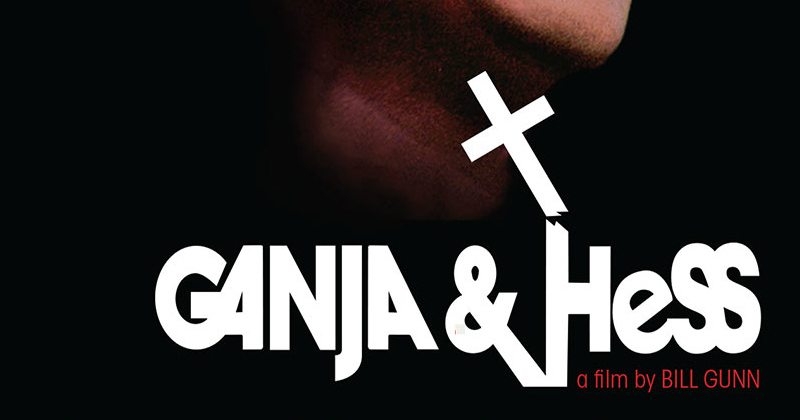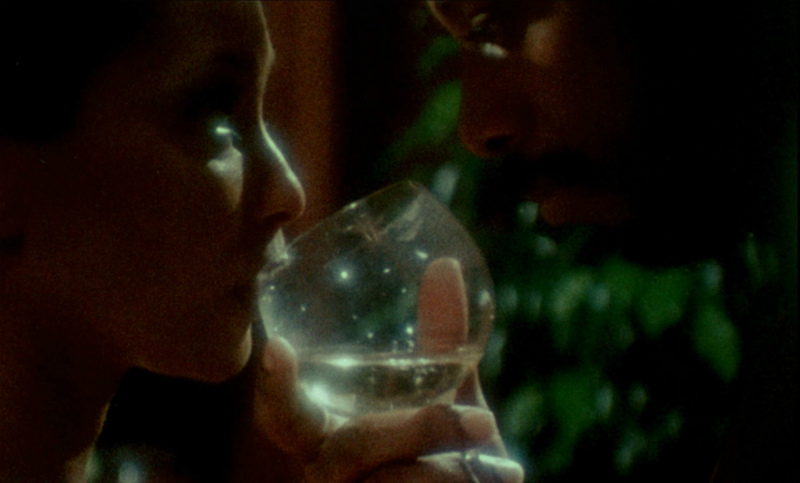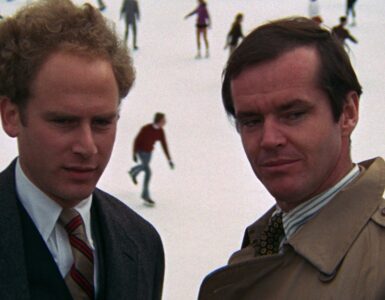
I only hesitate slightly in saying that Ganja & Hess is among the most invigorating, original films I’ve ever seen. Packed to the gills with themes of race, class, sex, addiction, religion, abuse, and probably another half-dozen topics, Bill Gunn’s masterpiece never releases its angry stranglehold on its material, but it also never once dives into pure diatribe or polemic. Its ferocity seems impossible to contain in standard language, requiring the very elements of nature (at one point, they capture an actual solar eclipse) to express some sort of reflection of its director’s passion.
Gunn, and Ganja & Hess, are often discussed in terms of what they were not. Gunn was hired to make a black vampire movie, following the success of 1972’s Blacula, but had no interest in the genre. He was, however, dying to make a feature film, so he leapt at the opportunity, and fooled production company Kelly/Jordan by submitting a screenplay that he subsequently abandoned almost entirely, save for a loose outline. Duane Jones plays Dr. Hess Green, a refined, cultured archaeologist who becomes a vampire (sort of) after his assistant stabs him with a very spooky dagger. He immediately kills his assistant and begins preying on his widow.

That all sounds very commercially-minded, and the sort of thing one could sell to a mass audience. The finished film is an entirely different beast, obscuring plot points in an unusual editing structure, chanted songs, discursions (of plot, theme, tone, aesthetics), and lots of sex. The effect is bewildering – I’ll admit I could barely follow the narrative – but an entirely different sort of thrill than Kelly/Jordan was expecting. The rush of imagery, all of it captured on often-bleached-out, oddly-focused 16mm, is at turns incomparably beautiful and totally mystifying, often within the same shot. It’s not always easy to even make out the onscreen action, and even when you can, finding tangible relations between the shots is extremely difficult on first viewing. Rather than obscuring the film or making it more difficult, however, Gunn (along with cinematographer James E. Hinton and editor Victory Kanefsky, both of whom were reportedly given a ton of creative freedom) works this footage together in such a way that kept me constantly searching the frame, and constantly engaged. The uncertainty of what is going on calls for active engagement, or at least curiosity, and Gunn draws us in, tempting us with sex and violence while the images deliver both in uncompromising, unusual ways.
Eureka Entertainment, via their Eureka! Classics line, presents Ganja & Hess on a spiffy, Region B locked Blu-ray edition that carries over a lot of content from the U.S. Kino edition and previous DVD edition from All Day Entertainment. But first, the transfer. As mentioned, Ganja & Hess was shot on 16mm, and Hinton and Gunn were not shy about showing it. Grain is heavy, colors are often blown-out, and saturation is high. Further – due to the film’s multiple edits (the full, 112-minute cut is presented here), damage is significant. But all those elements that could have been within their control, look as though they resulted from clear, definite decisions. Art isn’t always “pretty,” and while Ganja & Hess has a certain beauty, “prettiness” isn’t a factor. But I really commend Eureka (and The Museum of Modern Art and The Film Foundation, who provide the restoration) for committing so thoroughly to not only Gunn’s vision, but the circumstances under which it was created. Eureka, for their part, seems to have done nothing overtly harmful in translating this film to the digital realm.

As for those supplements, look first to a full commentary track with producer Chiz Schultz, actress Marlene Clark (Ganja), cinematographer James Hilton, and composer Sam Waymon, who all have differing perspectives – though loads of respect – for the process that lead to the film’s creation. They’d an odd bunch to throw together in a room – some are there to prop up themselves, some there to prop up Gunn, some just amazed they’re still talking about the film all these years later (the track has appeared on several previous home video releases) – but they play off one another well. Scholar David Kalat follows that up with his own selected-scene commentary, which runs about 18 minutes, doesn’t cover too much of the same territory as the feature-length track, and provides the characteristically stellar insight we’ve come to expect from him. Then, there’s a half-hour documentary on the film’s making and legacy, produced by Kalat. The production value of this thing is all over the place, with interviews sourced from public Q&As and private conversations, so keep that volume remote handy for the wild fluctuations. Lastly, Eureka provides a booklet with a really insightful essay by Kim Newman and an incisive, still-all-too-relevant letter written by Gunn for The New York Times about the way in which the film, and black films in general, have been received.
Ganja & Hess was something of a revelation for me, and Eureka! has done a masterful job brining the film to Blu-ray, providing an excellent transfer and engaging supplements.




![Bergman Island (The Criterion Collection) [Blu-ray]](https://criterioncast.com/wp-content/uploads/2022/11/bergman-island-the-criterion-collection-blu-ray-400x496.jpg)
![This Is Not a Burial, It’s a Resurrection (The Criterion Collection) [Blu-ray]](https://criterioncast.com/wp-content/uploads/2022/11/this-is-not-a-burial-its-a-resurrection-the-criterion-collection-blu-ray-400x496.jpg)
![Lars von Trier's Europe Trilogy (The Criterion Collection) [The Element of Crime/Epidemic/Europa] [Blu-ray]](https://criterioncast.com/wp-content/uploads/2022/11/lars-von-triers-europe-trilogy-the-criterion-collection-the-element-of-400x496.jpg)
![Imitation of Life (The Criterion Collection) [Blu-ray]](https://criterioncast.com/wp-content/uploads/2022/11/imitation-of-life-the-criterion-collection-blu-ray-400x496.jpg)
![The Adventures of Baron Munchausen (The Criterion Collection) [4K UHD]](https://criterioncast.com/wp-content/uploads/2022/11/the-adventures-of-baron-munchausen-the-criterion-collection-4k-uhd-400x496.jpg)
![Cooley High [Criterion Collection] [Blu-ray] [1975]](https://criterioncast.com/wp-content/uploads/2022/11/cooley-high-criterion-collection-blu-ray-1975-400x496.jpg)